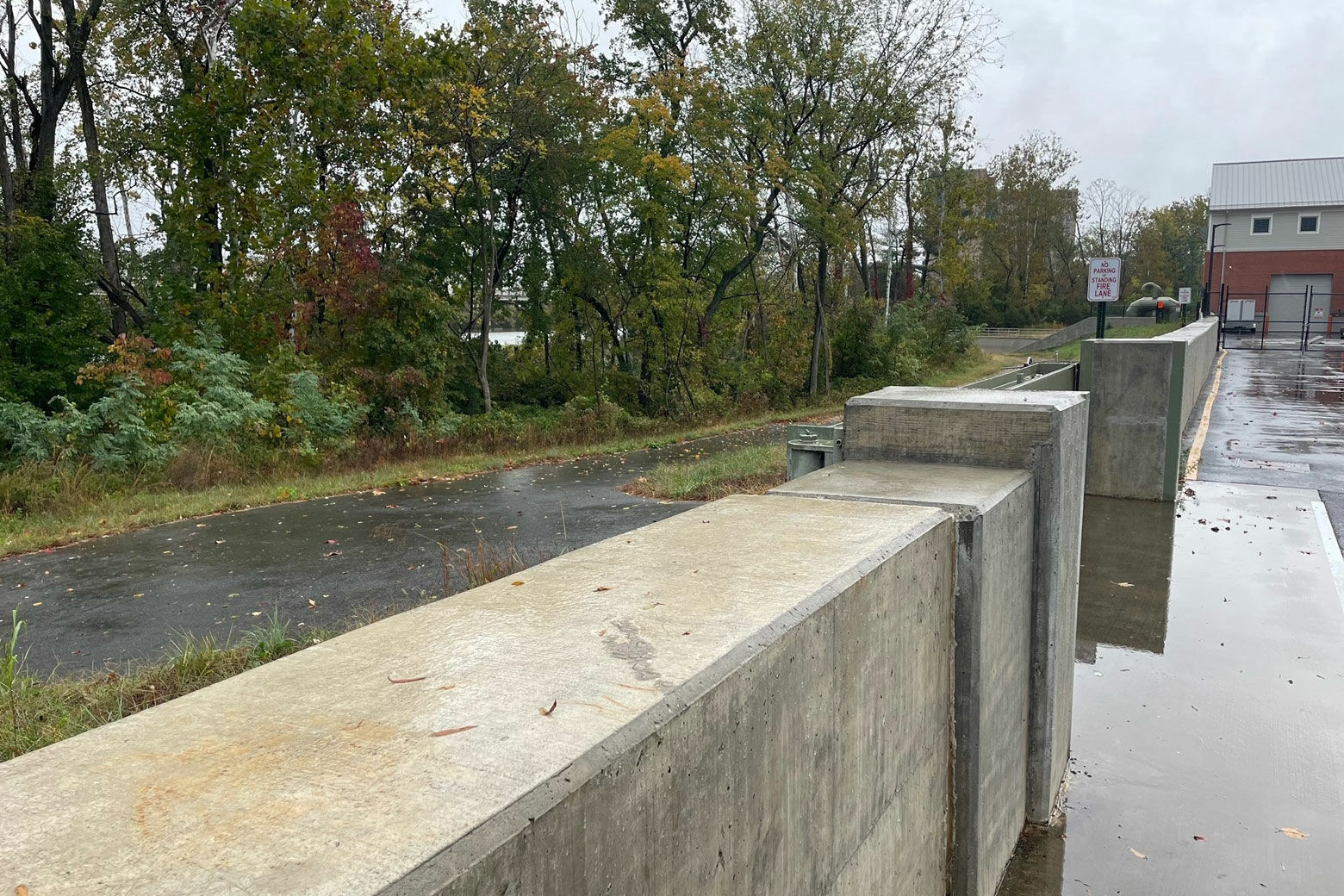
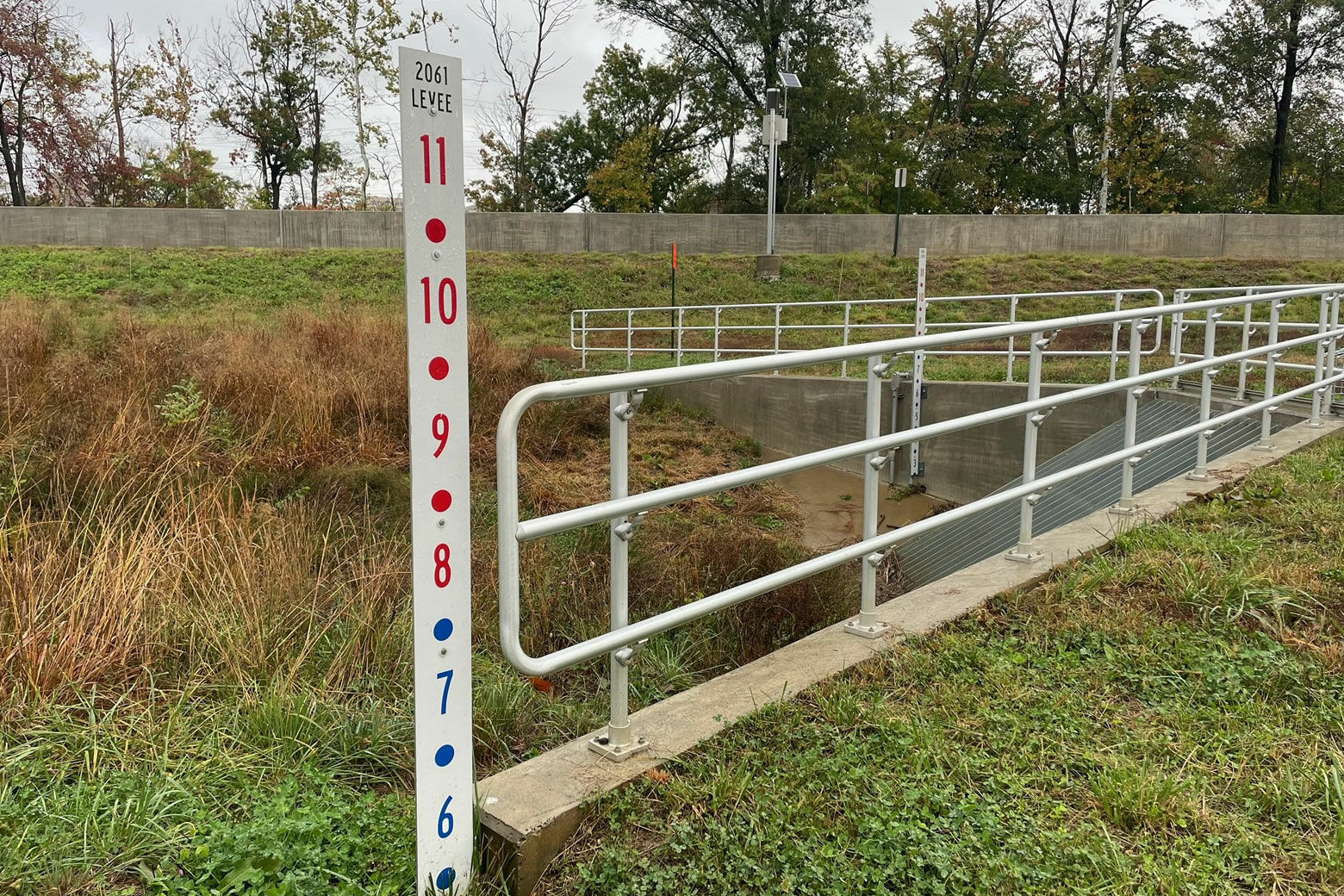
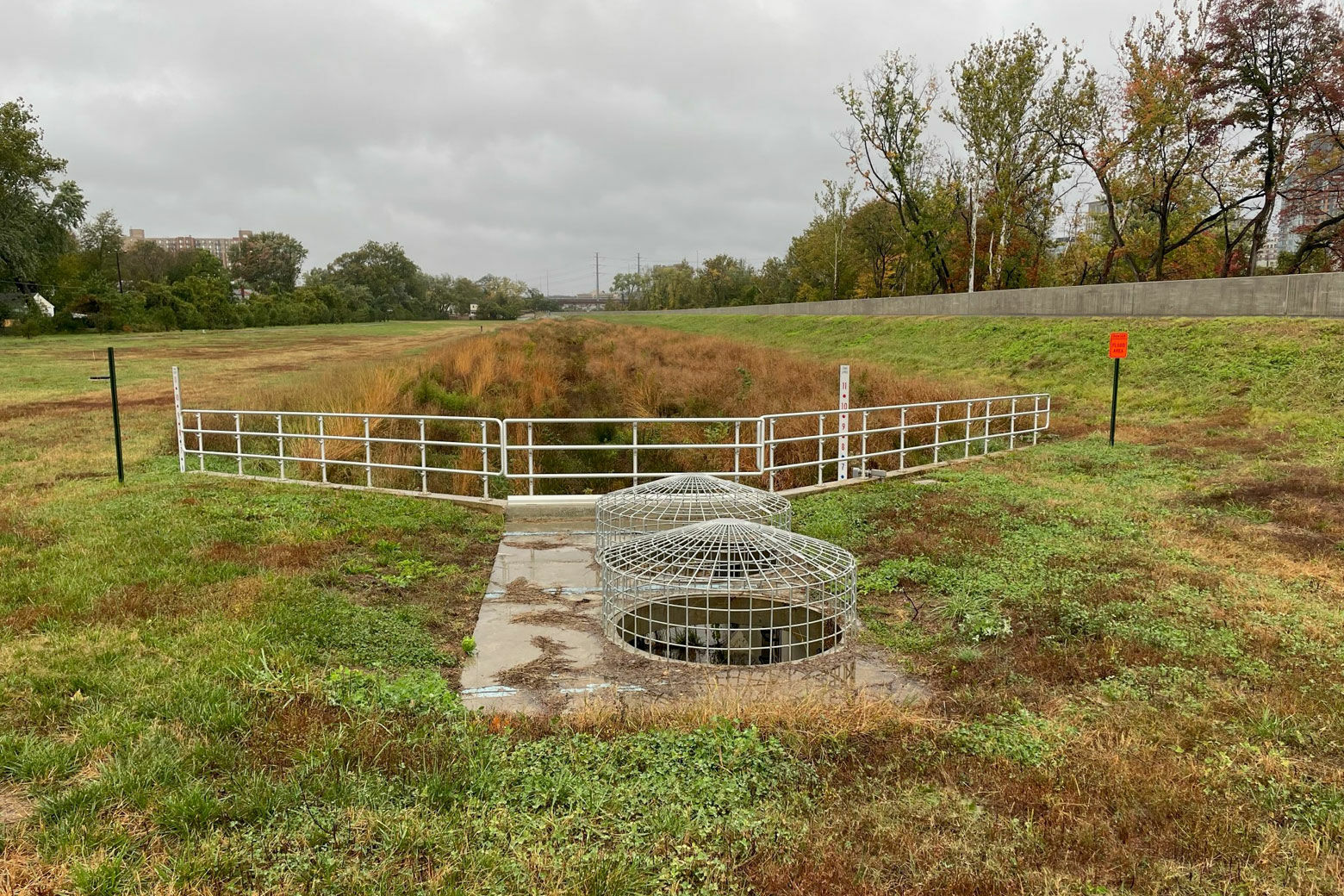
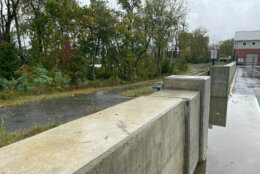
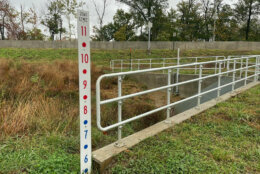
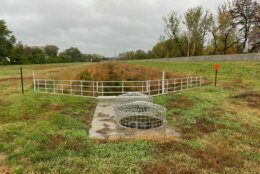
The prospect of heavy rains, wind and tidal flooding poses less of a threat than it used to in the Huntington neighborhood in Fairfax County, Virginia.
On Friday morning, the $40 million levee, built by Fairfax County in 2019, was doing what it should, resulting in neighbors enjoying fitness and dog walks, rather than hurriedly placing sandbags near their homes — albeit with the worst of the storm still to come.
The levee protects about 160 homes that were built before modern zoning regulations.
For decades, Cameron Run — a tributary to the Potomac River that runs parallel to the park — would flood homes during heavy rain events. In September 2011, during Tropical Storm Lee, the Capital Beltway had to be closed in both directions where it crossed Cameron Run.
Now, the earthen levee, between 6 and 11 feet tall, runs 2,800 feet along the park, topped with a 4-foot concrete wall.
A channel running along the levee would provide an extra layer of protection; water that pools in the channel is pumped back into Cameron Run by the pump house, on the east end of the park.
A paved walking and biking path atop the levee provides a nice view of the once-threatening waterway.
The protection didn’t come quickly, or cheaply.
In 2012, the county voted to add a storm water bond referendum to the ballot. Almost 80% of Fairfax County residents approved to fund the levee and pumping station.
Ground was broken in 2017, and the ribbon cutting was held in June 2019.








